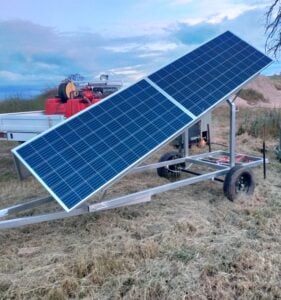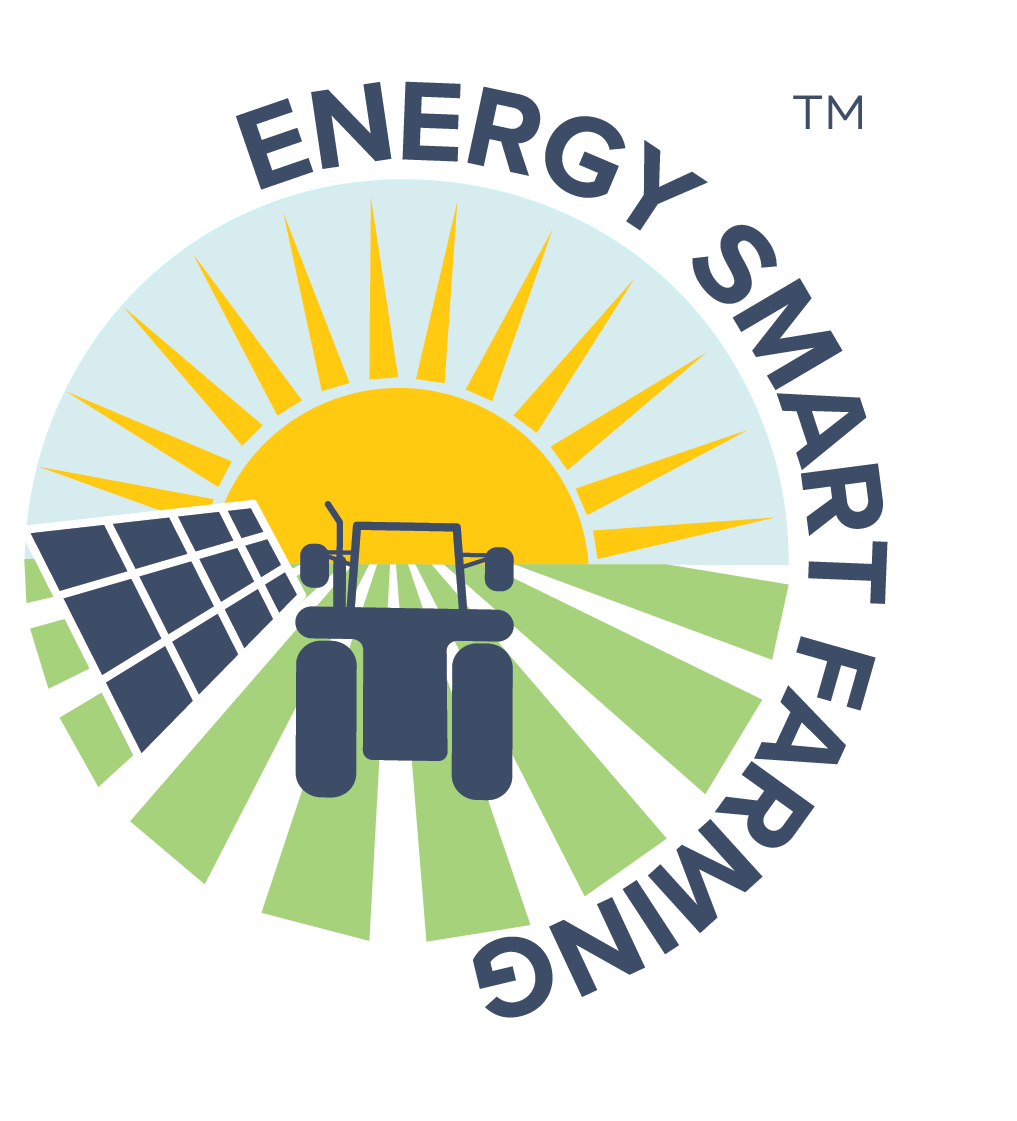As their Central Victorian free-range pig business grew, farmers Jason and Belinda Hagan found opportunities for greater farm efficiency, cost savings and equally important, producing new quality pork products.
The couple have built their McIvor Farm Foods business from scratch over the past decade – while regenerating their 200 hectare farm at Tooborac with zero use of chemicals or synthetic fertilisers. The business is based on growing and marketing their Berkshire pigs – with the Hagans turning off around 2000 pigs a year. As well as selling wholesale, they also deal directly with retail customers at farmers markets, their farm gate shop and through a direct mailing list. In 2020 the couple built a butchering facility (that is licensed with PrimeSafe) to take control of quality and add to their product range. They also provide a contract butchering service for other pig producers, processing around 600 pigs per year. Jason and Belinda had a free on-farm energy assessment in 2020 as part of the Victorian Government’s Agriculture Energy Investment Plan (AEIP) to identify opportunities to save energy costs. With assistance of an AEIP grant, they installed additional rooftop solar Photovoltaic (PV) panels, mobile solar water pumps (mounted on a trailer) and a solar powered water monitoring device.
The opportunity
McIvor Farm Foods has 150 sows, and as a free-range piggery with a regenerative commitment, the Hagans are dedicated to minimising the environmental footprint of pig rearing. Water supply is critical for livestock drinking and cooling. Water is pumped to the main (header) tank on the highest point of the farm and gravity fed via a polyethlene pipe network to the pig paddocks. Water supply for filling the header tank comes from the three main dams (which capture rainfall run off) and the onsite windmill. The type of reticulation system on the farm means that small holes and leaks result in water losses. The energy assessment highlighted that early detection and repair of leaks was was fundamental to reducing the energy required for water storage. The Hagan’s wanted to investigate a sensor device for remote monitoring of the main tank water levels and to assist in early detection of leaks. The existing water pumping system was based on a fixed electric pump and a mobile petrol firefighter pump. It was a relatively unreliable system and was expensive to maintain and operate. Labour was required to check the main tank water levels at least once a day. The Hagans wanted to explore the use of mobile solar water pumps for greater reliablility and flexibility for pumping from their three dams. A mobile pump system avoids the costs of a fixed electric pump system – whereby an individual electric pump (and supply connection) would be required at each of the dams. A mobile solar water pump substitutes the use of fossil fuels for pumping. Jason said that “having a solar pump system that can be towed around the property will enable us to draw water from different sites throughout the farm as the seasons change and will basically drought proof our property. “We are advocates for seeking professional help and the energy assessment guided us in the right direction to invest in technology that suited our business principles, improved our energy efficiency and give us the best return on our investment.” — Jason Hagan Water is a critical aspect of our farm and having water security is paramount to the success of our regenerative system.” Adding a butchery, smoking, and cooking facility to the farm has allowed expansion of product range and sales. The Hagans wanted to investigate ways to run the new operation efficiently and sustainably. Additional solar PV would reduce the use of grid electricity at the new facility.
The technology
Investment in additional solar power capacity was identified in the assessment as an opportunity for the business. There are two metered power sites on the farm. The site with an existing 15kW solar PV system and battery storage is used for cool storage of meat products and operating the farm shop. With the farm experiencing regular power outages, the setup ensures cool temperature can be maintained for food safety. The second site, where the new facility was built, has an existing 5kW solar PV system. An additional 22.5kW solar PV system was installed at this site. The Hagans also invested in two mobile solar water pumps, each equipped with PV panels. Each pump is mounted on a trailer and can be moved between dams as needed. The solar pump refills the header tank during daylight hours. The gravity fed system then supplies water (day and night) for stock needs (both drinking troughs and a spray system to keep pigs cool in warmer months). A water monitor (with its own solar panel) was also installed at the header tank. This monitors water levels 24 hours a day and sends real-time SMS alerts when water levels go outside the set thresholds.

Photo: Solar panels at the McIvor farm
The outcomes
Increased and innovative use of renewable energy has delivered energy, labour and water benefits. Jason says “the solar PV and solar water pumps are the bigticket energy savers. The tank monitor is simple yet delivers a quick win – fuel, time and water savings.” “The solar PV has worked out really well for us. As soon as the PV became operational at the new facility, we saw a steep decline in grid electricity use and costs. Except for the rare occasion when we need to shut down the header tank (and use an electric bore overnight), all our stock water pumping is powered by renewable energy. The mobile solar water pumps are reliable and provide continuity of stock water supply – and have nearly eliminated consumption of petrol on-farm.” With the tank monitor Jason now knows how much water is being used and when the tank is filling or full. This is useful for diagnosing pipe leaks and for confidence that their pigs have access to sufficient water. “No longer do I need to manually check the water supply every day to make sure it was all working properly. Receiving alerts on my phone from the tank monitor when there is a issue saves me time and means we can rectify any water issues promptly.”
Table 1: Investment costs and benefits of new energy saving technologies
| Technology | Investment costs | Benefits | Modelled annual costs | Payback (discounted) |
|---|---|---|---|---|
| Solar PV | $23,000 | Electricity | $5,300 | 5 years |
| Solar Pumps (2) | $23,000 | Petrol & other | $6,800 | 3.6 years |
| Water Monitor | $2,300 | Fuel & other | $3,000 | 1 year |
‘savings’. ‘Other’ benefits are water and labour savings, and net savings on servicing and maintenance. The value shown for ‘modelled annual benefit’ is the average of annual savings across the payback period. Note that for the water tank monitor, the majority of the combined benefits are from labour savings. Investment costs are ex-GST; and for eligible technology, also after deducting the value of small-scale technology certificates (STC). A 6 per cent discount rate was used in calculating the payback years.
The last word
Jason says “it has been a win-win for us. The solar technology has reduced our reliance on energy from fossil fuels, saving us time, delivering water savings and improving reliability. With electricity and fuel prices rising, our energy savings will only grow. We plan to install more renewables and battery storage in the future – which matches our energy needs with our sustainable business principles.”
Download a copy of this case study – Sustainability with solar.pdf



